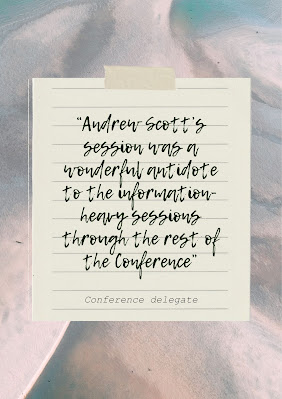One of my more unhelpful stories about myself (read the excellent Shifting Stories for more on this concept) is that I am really a bit of a fraud and my coaching is all smoke and mirrors. I don't really believe that, but if I want to depress myself, I can wallow around in it for a while, with some skill.
So I was surprised to hear myself say to another coach: 'Of course in a way, coaching is a confidence trick,' and more surprised to hear myself justify the assertion.
I was struck by the explanation of the short con in David Mamet's House of Games: it's a confidence trick because the con artist gives his confidence to the mark, not the other way around. (Though I still maintain that The Sting is the best con movie - I remember the first time I saw it when everyone in the cinema sat in silence for a minute or so at the end, catching up with what had just been played out...)Anyway, the point I was making, albeit in a provocative and playful way, is that as coaches we often lend our confidence to our clients. In the Thinking Environment approach to coaching, for example, when we give our client that quality of attention that is at the heart of that approach, we are implicitly asking the Incisive Question 'If you knew that you had more great thinking available to you, what would you think?' By embodying our belief in the client's capability, we often help him or her to find it. Other coaching approaches also have the coach as an implicit cheer-leader for the client.
That, of course, raises a second-level issue for the coach. We can't lend people our confidence if we don't have any to lend; yet most coaches I know are rightly wary of being too confident. Big egos get in the way of building an effective learning alliance with the client - but the same is true of excessive self-doubt of course.
As so often, we need to navigate a tension - on this occasion between arrogance and self-doubt. For me, this is about practicing humility (in the way C S Lewis described it: not thinking less of oneself, but rather thinking about oneself less often...) and simultaneously holding fast to my belief in the process: the value and efficacy of coaching. This enables me to talk with conviction about the probable success of the work that we are going to undertake together, whilst keeping my ego in its place. And that is a position from which I can lend the client a well-grounded confidence, along with that sense of hope that is one of the key aspirations I have for my clients.







